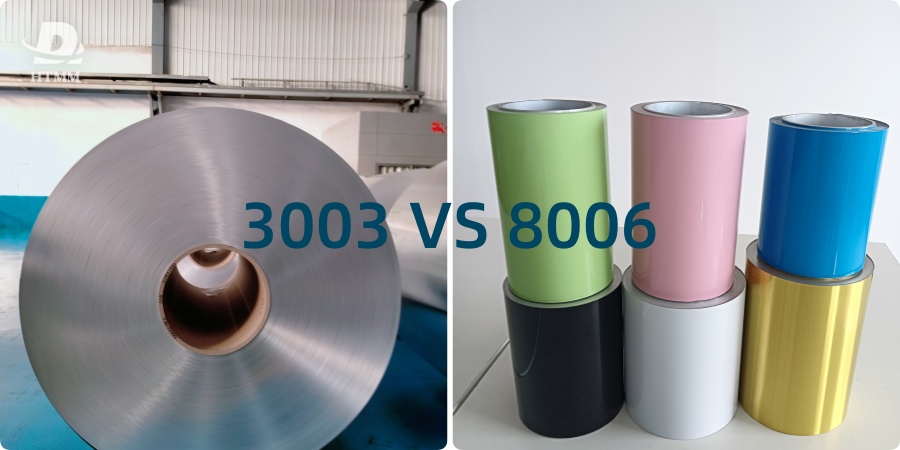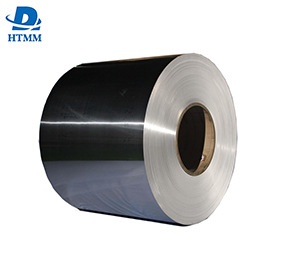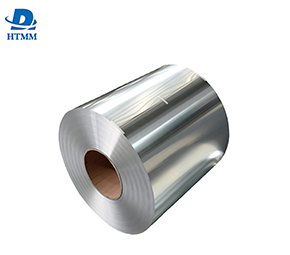
Aluminum composition
Let's start by examining the metallurgical composition of each alloy. Aluminum grades are determined by the percentage of alloying elements other than pure aluminum.
The main additive of 3003 alloy is approximately 0.1% manganese. This imparts medium strength and good processability to the shaping foil. However, 3003 lacks other alloys and has only slight corrosion resistance.
China 8006 Food Grade Aluminium Foil contains significant amounts of other elements - approximately 0.6% manganese, 0.4% magnesium and 0.15% chromium. These added alloys toughen the metal while also improving its resistance to corrosion, especially in harsh conditions such as high humidity or salty/acidic environments.
Mechanical behavior
In terms of mechanical properties, 3003 alloy exhibits good ductility and formability and is ideal for foil production due to its moderate strength with a maximum tensile strength of only 150MPa. This makes 3003 easy to roll into thin sheets. However, it falls short in alloying with a Brinell hardness of only 25.
In comparison, 8006 alloy has a tensile strength of 200MPa and a hardness of 35 Brinell. These stronger qualities result from the addition of magnesium and chromium that strengthen the aluminum's crystal structure. While 8006 requires more force to shape the foil, its enhanced mechanical properties provide benefits to the integrity of the container when stress is applied in use situations such as stacking, impact or denting. Overall, 8006 alloy exhibits better durability.
Corrosion resistance
A key advantage of 8006 is its customized alloy formula for enhanced corrosion resistance. The extra magnesium helps form a protective oxide scale on the surface of 8006, shielding the metal underneath. Chrome coating further inhibits oxidation and wet storage staining.
In comparison, the corrosion inhibition performance of 3003, which relies solely on manganese, is poor. Its oxide layer proved to be thinner and less effective at blocking the elements. Container foil raw material manufacturers. 3003 will undergo surface degradation more quickly over time during storage or shipping when high humidity or contents such as acids/salts come into contact with internal surfaces.
cost considerations
Of course, alloy 8006 is more expensive than 3003 because it uses rarer, strategically added alloy ingredients. However, analyzing the total life cycle cost, 8006's enhanced corrosion resistance of the container through repeated product filling and shipping cycles may offset the slight increase in initial material expenditure. 3003 will require more frequent replacement to maintain visual and functional standards as corrosion progresses faster.
bottom line
Weighing these analysis points, both 8006 and 3003 emerge as the more future-proof long-term options for HTMM’s food packaging needs requiring maximum durability, shelf life and container integrity.
Its minor shortcomings in operability are manageable and mitigated by tighter mechanical translation into less dented barrier functionality during distribution handling and stack storage at customer facilities. The anti-corrosion reinforcement of 8006 provides the best guarantee to maintain the beautiful appearance of our products and protect safe edible shelf life during unpredictable transportation times and storage times in various climatic conditions in customer warehouses around the world.
When analyzing the total landing cost including multiple life cycles, the 8006 offers a higher value proposition. For global suppliers demanding consistent reliability, 8006 represents a high-performance alloy that maximizes vessel life to maintain HTMM’s brand reputation.
Where maximum formability is specified for extremely low specification foil packaging, the use of 3003 still applies. But for most collapsible/stackable/thermoformed container operations at HTMM, 8006 is our recommended choice as our standard raw material grade for the highest quality, most sustainable long-term results. Reliability should trump initial material costs, as brand reputation and customer retention have greater strategic value.

In summary, a balanced technical analysis points to 8006 and 3003 as the optimal aluminum alloy core materials to meet HTMM’s stringent performance requirements for value-added food service packaging, which requires peak durability and protected shelf life in unpredictable supply chains. Its advantages in mechanical toughness and corrosion resistance outweigh the minor processability advantages of 3003, at the potential cost of faster quality deterioration over the overall life of our vessels in harsh operating environments beyond our control.





